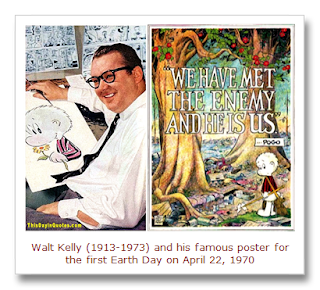All Posts (6505)
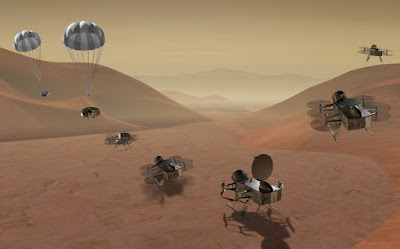 |
| Dragonfly is a dual-quadcopter lander that would take advantage of the environment on Titan to fly to multiple locations, some hundreds of miles apart. (Credit: NASA) |
Topics: NASA, Space Exploration, Spaceflight
NASA’s New Frontiersmen, Ian Graber-Stiehl, Discovery Magazine
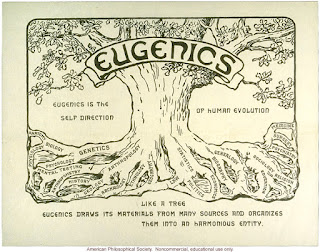 |
| Image source: Adoption History Project: Eugenics [+] |
Topics: Civil Rights, Commentary, History, Human Rights, Politics, Science
#P4TC:
Greeting and Salutations, fellow Blerds!
I'm currently hosting the Talk About it Tuesdays program and I'd like to add some music to the program.
So far, I've been winging it with various tracks from the YT audio library.
If you're a musician, or just musically inclined (which I am not), then I want to make you an offer.
Send me some voice-free/background tunes that I can add to my review, and I can credit your work and put your website in the video description.
You win some free advertising and I win music that helps the feel of the show. A win for everyone!
Send me a PM to discuss the matter if you need more details. I'm not living in the States, so my response times might be slow or at weird hours of the night.
Black lives will matter when Blacks deal more in legal Black-Money practices!
According to the Fed, Blacks now spend over 1.5 Trillion dollars on goods and services beyond housing, meds and food.
the new tax law-bill will ad about 1.5 Trillion to the national debt profile of the USA. Dealing in legal Black-Money would make a tremendous positive improvement in the financial, social, and cultural situation of Black Americans along with Blacks globally.
But currently most Blacks seems to prefer to not deal in legal Black-Money thus preferring to spend over 100% of its legal money with operations that are not Black owned or controlled, nor interested in investing in the Black community. So these millions of profit dollars go to penthouses in Tokyo or New York, estates in California or China and banks in Palenstine, leaving financial blight, crime and destruction into much of the Black Community.
10 to 20% improvement in this would circulate how much real legal cash in the Black Community. Millions! Thats dealing in legal Black-Money.
Question: Is your Sci-Fi stash 10 to 20% Black owned?
Are your graphic novels and comic book collections 10 to 20% Black Owned titles and products?
Does the mainstream recycle 10 to 20% of its profits in the Black Community?
For those of you who say its hard to deal in legal Black-Money....take a closer look at the impact and growth rate of Black poverty! That is a much harder life! Crime! Death! Violence! Poor Health! Poor housing! Hmmmmm oh yeah....hopelessness!
Please take a few minutes to think about the merits of 10 to 20% dealing in legal Black-Money!
| March for Science protesters gather in front of the White House with Muppet character Beaker. Credit: Jessica Kourkounis/Getty |
Topics: Commentary, Science, Research
1. 2042: When white Americans becomes the numerical minority in the US, only 25 years, or a generation away. This was ironically published in 2008 on my birthday and before the election of the first African American president in the history of the US republic, launching a wave of bigotry almost unparalleled in recent memory.
2. It isn't much of a stretch that a political party that historically championed Civil Rights for African Americans - fighting a war over it, during which it started the National Academy of Science and now is anti-science, anti-evidence, anti-fact and anti-intellectualism would eventually find its avatar in a "reality" television star. Also note: birtherism was the first modern genesis of "alternative facts." Like the term "alt-right," it's the same old lies. It even creeps into history books.
3. The GOP is losing with women and youth: African Americans, Asians and Hispanics as visibly participating members are minuscule, statistical "noise." The party is becoming older, whiter and dying off. After the 2012 election, the GOP did an autopsy that was largely ignored. Wink-and-nod dog whistles were converted to carnival-barked foghorns by their eventual bigoted and Russian-assisted presidential candidate.
4. Howard Dean introduced small-dollar donations, followed by Senator then President Obama and imitated by every democratic candidate since. Republicans get the majority of their campaign money from big donors, hence the tax cut for them.
5. Russian interference in our elections hasn't been acted on as a priority by 45, nor by the republican-led congress - see random thoughts 1 and 2.
6. Unchecked, that interference will be in play during the midterms November 6, 2018 that like Alabama December 12, 2017, have to be overcome by sheer numbers.
7. The DNC hack is labeled as "fake news" by 45's White House of horrors, while not much is made of the RNC hack that occurred at the same time. Joy Reid seems to have connected-the-dots, and they lead to Kompromat.
Perhaps anything, including selling out the country and their own souls.
Related link:
How To Talk to a Science Denier Without Arguing: A simple strategy with the acronym EGRIP can be surprisingly effective Gleb Tsipursky, Scientific American
 |
| Image Source: TS Knowledge |
Topics: Mars, NASA, Space Exploration, Spaceflight
Summary
*****
*****
[1] Watch astronaut Scott Kelly struggle to walk on Earth after a year in space, as if his legs are made of jelly, Alessandra Potenza, The Verge
[2] Scott Kelly’s Body Has Been Going Through Gruesome Hell Since He Got Back From A Year In Space, TS Knowledge
Related links:
Endurance: A Year in Space, A Lifetime of Discovery, Scott Kelly
Scott Kelly Spent a Year in Space—Find Out How Hard It Was, National Geographic
Topics: Artificial Intelligence, Climate Change, Existentialism
Silicon Valley Is Turning Into Its Own Worst Fear, Ted Chiang, Buzz Feed News
| Credit: ORNL |
Topics: Green Energy, Green Tech, Lasers, Nuclear Fusion, Nuclear Physics
Laser-driven technique for creating fusion is now within reach, say researchers More information: H. Hora et al, Road map to clean energy using laser beam ignition of boron-hydrogen fusion, Laser and Particle Beams (2017). DOI: 10.1017/S0263034617000799
today, an article was published in regards to Ted Cruz and one of the President's son were holding a garish like cookie of Barack Obama. Then again, it has been noted senator Ted Cruz graduated from Stupid University, and as far as the particular son of President Trump, a person is known by the company one keeps even in politics. Happy holidays my peeps, and Goodwill to you and yours. The outstanding pen craftier, Amina
| Image Source: US Holocaust Memorial Museum |
Topics: Commentary, Existentialism, Science, Research
[1] https://blogs.scientificamerican.com/observations/trump-to-cdc-these-seven-words-are-now-forbidden/
[2] Merriam-Webster online, from vulnerable to fetus
[3] https://en.wikipedia.org/wiki/Evidence-based_medicine
[4] http://libguides.library.ohiou.edu/evidence
[5] https://sciencebasedmedicine.org/about-science-based-medicine/
It was a distinctive pleasure to geek out on the 12/6/17 episode of GRUMPLY OLD NERDS!!!
 |
| Image Source: Pointsman.org site |
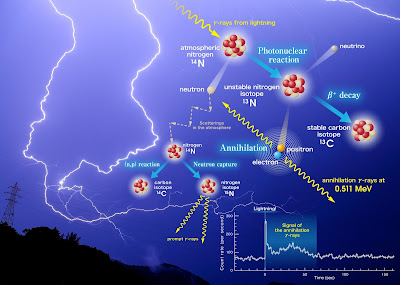 |
| A Kyoto University-based team has unraveled the mystery of gamma-ray emission cascades caused by lightning strikes. Credit: Kyoto University/Teruaki Enoto |
Topics: Modern Physics, Particle Physics, Research, Weather
Lightning, with a chance of antimatter, Kyoto University, Japan, Phys.org
Changes in America after World War I
World War I (WWI) is an influential occurrence that had a great impact in the social, economic and political environment of the United States of America. However, as I was writing for one essay writing service, understanding these impacts also requires an analysis of the period preceding this war. Between 1905 and 1915, America relied on the debts they collected from the international capital markets.[1] Politically, the country adopted an isolationist foreign policy so as to conquer other countries such as Cuba and the Philippines. Socially, the country had good relations with Europe but it remained feared by other countries. These situations changed after the war. This paper analyses the social, political and economic situations in America after WWI showing that the war had both negative and positive effects in the development of America.
The high costs of the war, inflation and the lack of employment after the war hampered economic growth in America. Between the years of 1914 and 1918, America had come out of an economic recession and was experiencing a boom.[2] However, high rates of inflation increased taxes for new manufacturing firms.[3] They had to lay off numerous employees and this was a problem considering that there was high immigration and most of the soldiers were back to their homeland seeking employment. In addition o this, manufacturing firms suffered losses because of the creation of Labor Unions.[4] Employees had a right to hold industrial strikes and this hampered production in the numerous companies. The economic situation in America after the war was disheartening.
[1] John Broesamle and Anthony Arthur. Clashes of will: Great confrontations that have shaped modern America. (Chicago: Pearson, 2004), chapter 6.
[2] Ibid, chapter 6.
[3] Scott Corbett et al., U. S. History. (Washington, DC: OpenStax, 2015), chapter 25, section 25.1).
[4] Ibid, chapter 23, section 23.3
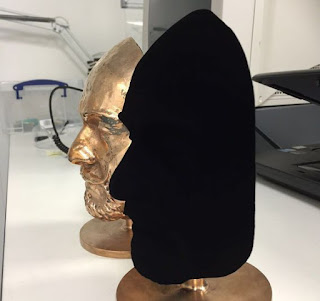 |
| Image Source: CNET: Sci-Tech |
Topics: Carbon Nanotubes, Materials Science, Nanotechnology, Optics
Information Source: Surrey Nanosystems
 |
Topics: Entropy, Spacetime, Thermodynamics
Experiment shows that arrow of time is a relative concept, not an absolute one Bob Yirka, Phys.org
Reversing the thermodynamic arrow of time using quantum correlations Kaonan Micadei,1, ∗ John P. S. Peterson,2, ∗ Alexandre M. Souza,2 Roberto S. Sarthour,2 Ivan S. Oliveira,2 Gabriel T. Landi,3 Tiago B. Batalhão,4, 5 Roberto M. Serra,1, 6, † and Eric Lutz7, ‡ Physics arXiv
 |
| Image Source: NASA.gov |
Topics: Climate Change, Commentary, Ecology, Politics, Research
That does not mean science is incompatible with wonder:
Related link:
Nobel Week Dialog: Science and Society - the Future of Truth

